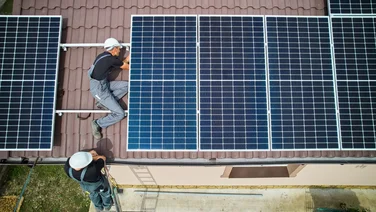- With around 70 million citizens at its peak, the Roman Empire had a transformative impact on its environment
- Cutting-edge techniques, such as analysing ice cores from Greenland, let us actually measure this impact
- It’s estimated that the Roman Empire added between 5-10 CO2 parts per million to the atmosphere
Weve all heard of the Roman Empire. Whether this was in school, as an interest, or just the fact that the Roman Empires impact is still felt to this day (think culture, language, architecture, etc.). Everyone knows they were a big deal, even if they dont know the who, what, when, where, and why.
But one area not dived into much is the Roman Empire’s environmental impact and the planet itself. This is because we’ve always had this idea that humanitys damaging effects on the environment didnt really kick off until the Industrial Revolution.
Now, thanks to fascinating discoveries, such as Roman air pollution found in Greenlands ice cores, were starting to see the Roman Empire in a different light.
Were taking a look at the environmental impact of the Roman Empire, and how its very existence actually contributed to climate change.

A brief introduction to the Roman Empire
The Roman Empire wasn’t always an Empire, much to the dismay of many.
In actuality, Rome spent less time as a fully fledged empire than it did as a monarchy in the very early days (753 B.C. to 509 B.C.), and as a republic in the centuries before empire (509 B.C. to 27 B.C.). It became an empire after Augustus (Julius Caesars adopted son) established autocratic rule, effectively ending one of the worlds earliest experiments with representative democracy.
For another half a millennia, the Romans spread across the then-known world. Their empire stretched from the borders of Scotland in the UK (marked by the famous Hadrians Wall), all the way to the edges of modern day Iraq. Eventually though, repeated invasions from so-called barbarians, intense economic strain, and mismanagement of resources/populations caused the empire to collapse.
It wouldnt be until the Renaissance (beginning roughly 1300 A.D.) that Europe would see anywhere near the level of art and innovation experienced under the Romans. And for the environment, Europe wouldnt see a comparable impact on it until the start of the Industrial Revolution.
How the Roman Empire changed the world
The Roman Empire had no electricity, no coal-guzzling factories, none of the things we typically associate with causing damage to the environment. So how did the Romans shape their world so significantly?
Well, it was quite literally the sheer scale of the empire, both in terms of logistics and that the empire had to keep expanding in order to exist. Never before in the history of the world had an organisation of humans reached this size or prosperity.
They achieved a cosmopolitan culture that required massive amounts of land to be transformed, whether for mining, agriculture, or general infrastructure.
The speed of which the Romans changed their world was helped by things we heavily associate with them, such as their comprehensive road network.
This made it much easier and faster to organise large-scale operations and subsequently, how quickly they could impact their environment.
Food consumption in the Roman Empire
For the upper crust of Roman society, food was an important part of not only proving their wealth to other Romans, but as a tool of persuasion too.
Hosting a lavish feast to impress a local senator might just have been enough to secure a lucrative grain contract, or to convince them to support a conflict somewhere in the empire.
The sorts of food they were able to offer expanded as rapidly as the empire did. As each new trade route opened, new food became available and was shipped into Rome in much the same way we import exotic food today. The caveat was that it took a darn sight longer for the food to actually travel.
Despite this, the importance of homegrown food for the denizens of Rome never diminished, and neither did the land required to grow it.
To accommodate the typical diet of grains, cheese, meat and fruit, large areas of land needed to be cleared. This resulted in the largest scale of deforestation Europe had ever seen (see below).
In particular, it was livestock that caused immense damage to the landscapes of ancient Italy and beyond. The Romans had very little idea of what overgrazing actually meant, so big herds of cattle, sheep, goats etc., were effectively left to destroy their own environment.
Such was the level of overgrazing, that its thought by many that regions in Southern Italy still havent recovered.
Olive oil was a transient practice
Although not strictly used only for food, olive oil and its cultivation was one of ancient Romes most transformative practices. Such was their love of the liquid gold, they ended up terraforming much of Spain to make way for olive trees.
This had the unfortunate effect of devastating biodiversity in the region, something the Romans wouldnt have understood at the time. Its estimated that the Roman Empire was consuming around 25 million litres of the stuff every year. Thats a lot of olives and subsequently, a lot of land clearing/deforestation.
The Romans ate all manner of things, including dormice stuffed with meat, platters of flamingo tongues, and a paste made from ground fish that acted as a substitute for salt.
Deforestation in the Roman Empire
Deforestation is one of the biggest problems facing the modern world, as each tree felled means the loss of another carbon sink. It was a huge problem in the ancient world too, causing many of the same problems we associate with deforestation today.
In fact, there are marshlands and other environments that existed long after the fall of the empire that were a direct result of Roman deforestation. The Pontine Marshes, for example, were worsened by intense deforestation. In the southern parts of the empire, deforestation removed the forests that had kept advancing deserts at bay.
The Roman Empire was vast in a scale that even contemporaries struggled to fathom, with an estimated 60-70 million people living as citizens during its peak (117 AD). In an age before globalisation, such numbers are frankly astonishing.
With this many people came the obvious demand for wood for fuel, building, warfare, and more. Found out more below:
Fuel
Wood accounted for a whopping 90% of the fuel Roman citizens used. Wood was used for warming homes, cooking food, heating those famous Roman baths, and more.
On the larger scale, wood as fuel was an essential material for much of the Empires most important endeavours. Mining, for example, required huge amounts of timber to fuel the furnaces and build the necessary infrastructure. Warfare required a lot of wood to keep the army marching too (warmth and cooking).
Buildings
While both stone and brick were used for a lot of buildings in the Roman Empire, wood was still an essential part of building. It was used in the flooring of most homes (ignoring the ornate mosaics far less likely to appear in the average home). Scaffolding was also important for larger scale projects, requiring yet more trees to be cut down.

Warfare
Vast quantities of wood were needed to maintain the Roman war effort, which in the ever-expanding boundaries of the empire, was a near-constant thing. Wood would be used for spears, bows, arrows, and siege engines.
The most important engine of war for the Romans though, were its ships. For the Romans, having a large navy was essential to not only expanding its empire, but in maintaining it too. Oftentimes, a rebellion would occur in some province of the empire and the Romans would have to transport large numbers of soldiers to put it down.
One example of the numbers involved would be the Siege of Jerusalem, where the province of Judea rebelled against the occupying Romans. To suppress the uprising, Rome sent 70,000 soldiers by ship. When you consider that a typical Roman trireme (a Latin word meaning ship with three banks of oars) could hold around 200 men, thats around 350 ships.
Calculating the carbon impact of Roman deforestation
Finding accurate sources of deforestation in Roman times is never going to be easy, so instead well give our best educated guess with an example. If we look at the number of homes in Rome, roughly how much wood would be needed to build them, and consider the amount of carbon stored in a single tree, we can approximately guess how much carbon was released.
The city of Rome at its peak had more than 1 million citizens living within its walls. Assuming the average number of people living in a single home as four, that gives us 250,000 properties (well ignore the fact that some lived in grand villas, some in ordinary houses, and some in cramped apartment blocks).
Take a typical Roman home, which almost always consisted of two rooms (even in the apartment blocks), then assume an average floor area of 1,000 sq ft. Using this calculation and factoring in the trees used by Rome for building, we can guess they used around 1,200 board feet of timber. This would amount to around three mature trees used per home. That gives us a rough figure of 750,000 trees felled to build Romes homes!
For fuel, if we look at the average amount of wood used to warm a Mediterranean home in winter, we get around one cord of wood. A tree with a diameter of 22 inches will yield a full cord of wood, so we expect an average of 250,000 trees felled per year just to keep the Romans warm in the colder months.

Mining in the Roman Empire
Mining for the Romans became far more industrialised than in any other previous ancient civilisation. It was essential to their coinage for starters, which was needed to keep the ever-burgeoning economy sustained in the wake of constant expansion. This led to new mines appearing in conquered territories all the time.
For example, in the mid 2nd century A.D., a region in Roman Spain was producing 36 million sesterces (Roman currency) a year, which is the equivalent of around 450 pounds of silver. This was just one region of Spain imagine how much silver was produced throughout the whole empire.
As such, many landscapes in the Roman Empire wouldve been pitted with silver mines, which produced highly toxic materials, such as lead, as a byproduct. Consider the above example in Spain and you can get some idea of the amount of toxic lead being introduced into the environment.
This, of course, wouldve had catastrophic effects on the immediate surroundings of the mines. After all, lead poisoning of rivers remains an issue to this day. Not only the rivers, but Europes air quality was actually impacted by the intense Roman mining activities.

Totalling the carbon footprint of the Roman Empire
It’s nearly impossible to accurately calculate something like a carbon footprint. Instead, we can use an example a little closer to our time the dramatic depopulation of the Americas in the 1500s.
When diseases like smallpox and the pressures of forced labor wiped out 90 – 95 percent of the Americas population, global CO2 levels dropped from 282 ppm (parts per million) in 1500, to 275 ppm by 1600. The population of the Americas prior to this was estimated to be up 70 million, similar levels to the Roman Empire at its peak.
Using these numbers and assuming similar fuel consumption and deforestation, its reasonable to guess that the Roman Empire contributed between 5-10 ppm of CO2 to the atmosphere.

Summary
- The Romans, apart from their legacy of building, roads, and culture, are proof that humans have been changing the worlds climate for far longer than we might have expected
- For the upper crust of Roman society, food was an important part of proving their wealth to other Romans
- They achieved a cosmopolitan culture that required massive amounts of land to be transformed, whether for mining, agriculture, or general infrastructure
- Deforestation was a huge problem in the ancient world too, causing many of the same problems we associate with deforestation today
- Mining for the Romans became far more industrialised than in any other previous ancient civilisation
- Many landscapes in the Roman Empire wouldve been pitted with silver mines, which produced highly toxic materials, such as lead, as a byproduct







